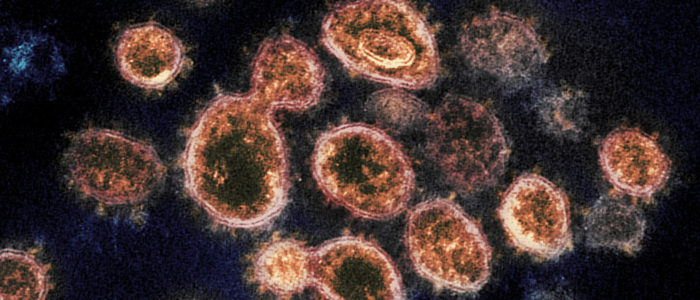A scientist labors over the bench, hands moving precisely to execute a streamlined series of repetitive movements, moving liquid from different tubes and combining reagents. They reach for a timer magnetically adhered to the shelf and press ten minutes. Moving the tubes into their thermocycler, they breathe a sigh of relief.
Who did you just picture? Describe them in the comments before moving on!
Studies show that most of you likely pictured a man, even though no gender-affirming language was used in the previous description of the scientist’s work. It’s not your fault! The media and society at large presents men as the predominant innovators in science, even when history tells a different story.
In 1968, Robert K. Merton used the term the “Matthew Effect” to describe how disadvantaged/marginalized people are under-recognized. The term comes from Matthew 13:12 in the Bible. “For to the one who has, more will be given, and he will have an abundance, but from the one who has not, even what he has will be taken away.” In 1993, Margaret Rossiter coined the term the “Matilda Effect”, describing the phenomena that women are often overlooked in their contributions to innovation in science and other fields. In honor of Women’s History Month, we are going to explore underappreciated women whose contributions to their fields were ignored or overshadowed by men.
Contributions in Medicine

Out of 216 Nobel laureates for physiology and medicine, only 12 have been women. Many of you know about the polio vaccine, created by Jonas Salk, the three men who discovered insulin and sold the patent for $1, and maybe even Hans Christian Jacobaeus, who invented laproscopic surgery. However, have you heard of Alice Ball who revolutionized the treatment for leprosy using modified chaulmoogra oil in 1915? Probably not – her colleague Arthur L. Dean published her work as his own after her death.
More recently, in 1973, Candace Pert discovered the opiate receptor, a key finding for the management of pain, which won an Albert Lasker Award. But the prize was not for her. Instead, it went to her supervisor, Solomon H. Snyder.
What about Grace Fryer or the Radium Girls? Now that the movie depicting the girls’ struggle for justice with American Radium is on Amazon Prime, you may have heard more about them. In the early 20th century, young women were employed by American Radium to paint radium onto clock faces, using their lips to create a fine point on the radium-laced paint brush. This caused what would be known as radium necrosis, a rotting of the flesh starting in the jaw and working its way through the rest of the body. American Radium knew the chemical was dangerous and linked to mortality, yet they did nothing to warn their employees. Everyday, more women fell ill and no one stopped them from licking the paint brushes. A settlement reached by the Radium Girls in 1928 provided the litigants with a cash offering and was the impetus for the creation of the Occupation Safety and Health Administration, OSHA.
This post wouldn’t be complete without mentioning Henrietta Lacks. Although she is quite famous by today’s standards, she was neither compensated nor asked for permission when her cancer cells were stored by scientists in 1951.
Her immortal cells are widely used in science today, called HeLa cells because of her name. “Millions of people owe their lives to the tissue taken from her – the cell line it generated was used to create the first polio vaccine, cancer medicines and in vitro fertilisation. Her cells even made it into space before any living human,” (Park, 2020).
This line of cells still reproduces today and was, until the isolation of the HEK273 line in 1973, the only immortal human cell line.
Physics, Chemistry, and Astronomy

Next, let’s move on to physics, chemistry, and astronomy.
In the history of Nobel Prizes, 215 have been awarded in physics, including only 4 women, and 185 have been awarded in chemistry, including only 7 women -two of whom won jointly last year for the invention of CRISPR-Cas9. Among those women awardees, one of them was Marie Curie, who won Nobel prizes for both physics and chemistry for her efforts in studying radium and radiation in 1903 and 1911, respectively. Linus Pauling, John Bardeen, and Frederick Sanger are the only other people who have won two Nobel prizes. Out of 930 individual laureates, that’s less than half a percent!
Shortly after this in 1912, Henrietta Leavitt discovered the period luminosity relationship, which is crucial to modern astronomical science, but she was never recognized for her work. The period luminosity relationship is helpful in finding the distances to far away stars and galaxies. In 1934, Ida Tacke discovered masurium, an element now named technetium by the men who were credited with the discovery. In 1939, Lise Meitner and her nephew coined the term “nuclear fission” and made calculations imperative to the understanding of fission. Nuclear fission involves splitting a nucleus of an atom to release energy. Chemist Otto Hahn won the Nobel Prize for the discovery of nuclear fission, which he would not have been able to do without Meitner’s previous work.
Many people learned about the Manhattan Project in school, the top-secret name for the operations to manufacture the atomic bomb. Chien-Shiung Wu made invaluable contributions to nuclear physics; without her, the bomb would not have been made. However, her collaborators received the Nobel prize, and she did not.
You also may have heard of Katherine Johnson, made popular by the movie “Hidden Figures”. She came up with the path for the moon landing but due to her gender and race, her efforts went largely unrecognized. In 1967, Dame Jocelyn Bell Burnell discovered pulsars as a graduate student. A pulsar is a very compact star that emits a beam of radiation; it is a final stage in the evolution of a star. In the following year, Vera Rubin discovered dark matter. Both discoveries merited Nobel prizes, but both women fell short.
Biology, Genetics, and Evolution

Finally, let’s talk about biology, genetics, and evolution.
In 1812, Mary Anning found fossil evidence of extinction and evolution, but her collaborators got all the credit. In 1905, Nettie Maria Stevens discovered sex chromosomes, which defied the law of Mendelian genetics, but her advisor took the credit. The way sex chromosomes work is vital to understanding the genetic elements of reproduction.
If you’ve taken a developmental biology class, you have probably heard about Spemann’s Organizer, the group of cells responsible for the creation of neural tissue in a developing organism. You’d be surprised to know this was discovered in 1909 by Ethel Browne before Spemann got a hold of the data!
Esther Lederberg made innumerable contributions to microbial genetics in 1952, but her husband got the Nobel with no credit going towards her. Also in that same year, Rosalind Franklin imaged the famous “Photo 51” showing an X-ray diffraction of DNA, proving its double-helicase structure. Watson and Crick won the Nobel and are largely credited with the discovery of DNA’s structure in most textbooks today.
Perspective
All of these women, and more, advanced science in incredible ways. By remembering and properly crediting their discoveries, we can ensure that their efforts were not in vain. Recognizing women’s contributions to science is important. We owe it to the next generation to pave the way by highlighting sexism in science to make sure history does not repeat itself.
References
- Figures created with Biorender.com
- Brady, L., Herkenham, M. Candace B Pert. Neuropsychopharmacol 38,2730 (2013). https://doi.org/10.1038/npp.2013.269
- Dark energy, dark matter. (2021, March 23). Retrieved March 23, 2021, from https://science.nasa.gov/astrophysics/focus-areas/what-is-dark-energy
English Standard Version Bible. (2001). ESV Online. https://esv.literalword.com/Ferrell, R.V. (2018).
Esther Miriam Zimmer Lederberg: Pioneer in Microbial Genetics. In Women in Microbiology (eds R.J. Whitaker and H.A. Barton). https://doi.org/10.1128/9781555819545.ch33
Frisch Otto Robert 1970Lise Meitner, 1878-1968Biogr. Mems Fell. R. Soc.16405–420 http://doi.org/10.1098/rsbm.1970.0016
Graham, W. F. (2020). Live and let live: The remarkable story of HEK293 cells. Human Gene Therapy, 31(7–8), 485–487. https://doi.org/10.1089/hum.2020.29116.oxg
Hammond, R. (2010). Chien-shiung Wu: Pioneering nuclear physicist. New York, NY: Chelsea House.
Hernandez, Victoria, “Photograph 51, by Rosalind Franklin (1952)”. Embryo Project Encyclopedia (2019-12-30). ISSN: 1940-5030 http://embryo.asu.edu/handle/10776/13138.
Hersher, R. (Host). (2014, December 28). Mae Keane, One Of The Last ‘Radium Girls,’ Dies At 107 [Radio broadcast episode]. https://www.npr.org/2014/12/28/373510029/saved-by-a-bad-taste-one-of-the-last-radium-girls-dies-at-107
Lenhoff H. M. (1991). Ethel Browne, Hans Spemann, and the Discovery of the Organizer Phenomenon. The Biological bulletin, 181(1), 72–80. https://doi.org/10.2307/1542490
Longhair, M. (2011). The Discovery of Pulsars and the Aftermath. Proceedings of the American Philosophical Society, 155(2), 147-157. Retrieved March 1, 2021, from http://www.jstor.org/stable/23056832
Malcom, S. M. (2020). Katherine Johnson (1918–2020). Science, 368(6491), 591-591. doi:10.1126/science.abc1546
Ogilvie, M., & Choquette, C. (1981). Nettie Maria Stevens (1861-1912): Her Life and Contributions to Cytogenetics. Proceedings of the American Philosophical Society, 125(4), 292-311. Retrieved February 28, 2021, from http://www.jstor.org/stable/986332
Parascandola, J. (2003). Chaulmoogra Oil and the Treatment of Leprosy. Pharmacy in History, 45(2), 47-57. Retrieved February 28, 2021, from http://www.jstor.org/stable/41112155
Park, W. (2020, November 24). The young woman who saved millions of lives without knowing. Retrieved March 19, 2021, from https://www.bbc.com/future/article/20201123-the-young-woman-who-saved-millions-of-lives-without-knowing
Pulsars. (2011, January). Retrieved March 23, 2021, from https://imagine.gsfc.nasa.gov/science/objects/pulsars2.html.old
Rossiter, M. (1993). The Matthew Matilda Effect in Science. Social Studies of Science, 23(2), 325-341. Retrieved February 28, 2021, from http://www.jstor.org/stable/285482
Santos, G. M. (2014). A tale of oblivion: Ida Noddack and the ‘universal abundance’ of matter. Notes Rec.68373–389 http://doi.org/10.1098/rsnr.2014.0009
Skloot, R. The Immortal Life of Henrietta Lacks (Crown Publishers, New York, 2010).
Soszyński, I., Udalski, A., Szymański, M. K., Wyrzykowski, Ulaczyk, K., Poleski, R., Pietrukowicz, P., Kozłowski, S., Skowron, D. M., Skowron, J., Mróz, P., & Pawlak, M. (2017). Concluding Henrietta Leavitt’s work on classical cepheids in the magellanic system and other updates of the OGLE collection of variable stars. Acta Astronomica, 67(2), 103–113. https://doi.org/10.32023/0001-5237/67.2.1
Tolsma, S. S. (2019). THE RADIUM GIRLS: The Dark Story of America’s Shining Women. Perspectives on Science and Christian Faith, 71(1),56+. https://link.gale.com/apps/doc/A581940729/AONE?u=gauniv&sid=AONE&xid=40f49a91
Torrens, H. (1995). Mary Anning (1799–1847) of Lyme; ‘the greatest fossilist the world ever knew’. The British Journal for the History of Science, 28(3), 257-284. doi:10.1017/S0007087400033161
Truog, R. D., Kesselheim, A. S., & Joffe, S. (2012). Paying patients for their tissue: The legacy of henrietta lacks. Science, 337(6090), 37-38. doi:10.1126/science.12168
Other Resources
Further Watching:
- The Ball Method
- Radium Girls
- Enigma
- Temple Grandin
- Erin Brockovich
- Joy
- Gorillas in the Mist
- Hidden Figures
Further Reading:
- Rosalind Franklin: the Dark Lady of DNA
- Thinking in Pictures
- Invisible Women
- Silent Spring
- Lab Girl
- Dorothy Hodgkin: A Life
- Rise of the Rocket Girls
- The Only Woman in the Room
- The Immortal Life of Henrietta Lacks
- Chrysalis: Maria Sibylla Merian
- Jane Goodall: The Woman Who Redefined Man
- In Praise of Imperfection
- Inferior: How science got women wrong and the new research that’s rewriting the story
- The Radium Girls





